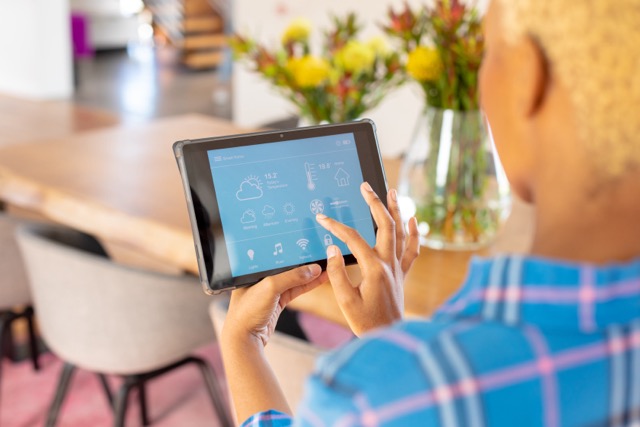The emergence of smart blood sugar monitors marks a significant milestone in diabetes management, combining technology and healthcare to enhance patient outcomes. These devices not only provide real-time glucose readings but also integrate with mobile applications, offering users a holistic view of their health. This article delves into the pioneering scientists behind this revolutionary innovation, the cutting-edge technologies employed, the impact on diabetes management strategies, and the future prospects for blood sugar monitoring technologies.
The Pioneers Behind the First Smart Blood Sugar Monitor
The development of the first smart blood sugar monitor can be attributed to a collaboration of engineers, scientists, and medical professionals who recognized the urgent need for more effective diabetes management tools. Among them, Dr. William H. Foege, an epidemiologist, played a crucial role in fostering the integration of technology into healthcare. His vision for a device that could simplify and automate glucose monitoring laid the groundwork for subsequent innovations.
Another key figure, Dr. John L. H. W. Oh, a biomedical engineer, was instrumental in developing the algorithms necessary for the accurate interpretation of glucose data. His work allowed for complex calculations that translate raw data into meaningful insights for users. Through their combined efforts, these pioneers paved the way for a device that not only measures glucose levels but also analyzes patterns and provides actionable recommendations.
The initial prototype of the smart blood sugar monitor emerged from a partnership between various tech companies and healthcare institutions, highlighting the importance of interdisciplinary collaboration. Researchers and developers worked tirelessly to create a user-friendly interface, ensuring that the device would be accessible to a wide range of patients, including those who may not be technologically savvy. This collaborative spirit was crucial in bridging the gap between technology and clinical practice, leading to the successful launch of the first smart blood sugar monitor.
Innovative Technologies Used in Smart Blood Sugar Monitoring
Smart blood sugar monitors utilize a range of innovative technologies to deliver accurate and timely glucose readings. At the core of these devices lies continuous glucose monitoring (CGM) technology, which employs tiny sensors that are inserted under the skin to measure glucose levels in interstitial fluid. This method allows for continuous tracking and alerts patients to fluctuations in their glucose levels in real time.
Additionally, many smart monitors are equipped with Bluetooth connectivity, enabling them to sync with smartphones and other devices. This integration not only allows for the easy transfer of data but also facilitates the use of mobile applications that offer personalized insights, reminders, and educational resources. Users can track their glucose levels over time, analyze trends, and share data with healthcare providers, enhancing the collaborative nature of diabetes management.
Moreover, advancements in machine learning algorithms have further revolutionized the functionality of smart blood sugar monitors. These algorithms analyze large datasets to identify patterns and predict future glucose levels, allowing users to make informed decisions about their diet, exercise, and medication. This predictive capability is a game-changer, empowering patients with knowledge and tools to better manage their condition.
Impact of Smart Monitors on Diabetes Management Strategies
The introduction of smart blood sugar monitors has significantly transformed diabetes management strategies, shifting the focus from reactive to proactive care. Traditional methods often relied on periodic finger-prick tests that provided limited information. In contrast, smart monitors offer continuous data that enable patients to understand how various factors—such as diet, physical activity, and stress—affect their glucose levels. This comprehensive insight allows for more tailored management strategies.
Furthermore, the ability to receive real-time alerts about high or low glucose levels has enhanced patient safety. With immediate notifications, users can take corrective actions quickly, reducing the risk of severe hypoglycemic or hyperglycemic events. This feature is particularly beneficial for individuals with a history of severe blood sugar fluctuations, contributing to better overall health outcomes and improved quality of life.
The integration of smart blood sugar monitors into diabetes care has also fostered better communication between patients and healthcare providers. The data collected by these devices can be easily shared during medical appointments, allowing for more informed discussions about treatment plans and adjustments. This collaborative approach not only improves patient engagement but also empowers individuals to take an active role in managing their health.
Future Prospects for Blood Sugar Monitoring Technologies
Looking ahead, the future of blood sugar monitoring technologies is promising, with ongoing research and development aimed at further enhancing device capabilities. One exciting prospect is the potential for non-invasive glucose monitoring methods, which would eliminate the need for skin pricks altogether. Researchers are exploring optical sensors and transdermal technologies that could provide accurate glucose readings without the discomfort associated with traditional methods.
Another area of innovation involves the integration of artificial intelligence (AI) and advanced analytics into smart monitors. By harnessing the power of AI, future devices could offer even more accurate predictions and personalized recommendations, adapting to the unique patterns of each user’s glucose levels. This level of precision could revolutionize how individuals manage their diabetes, making it easier to maintain optimal glucose control.
Finally, the convergence of smart blood sugar monitors with other health technologies, such as wearables and telemedicine platforms, holds great potential. This synergy could lead to the development of comprehensive health management systems that monitor not only glucose levels but also other vital signs, providing a holistic view of a patient’s health. As technology continues to advance, the future of diabetes management appears bright, with smart blood sugar monitors at the forefront of this evolution.
In conclusion, the development of the first smart blood sugar monitor represents a remarkable achievement in the intersection of technology and healthcare. The pioneers behind this innovation have laid a strong foundation that has fundamentally changed diabetes management strategies. As we look to the future, ongoing advancements in monitoring technologies will likely continue to enhance patient care, providing more effective tools for individuals living with diabetes. The journey of innovation in this field is far from over, and the possibilities for improved health outcomes are limitless.










